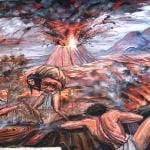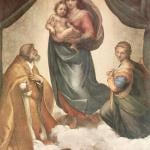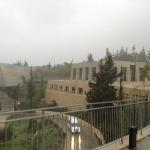 Recently I read the CEB text and study material for the Gospel of Matthew in the Common English Bible Study Bible (Abingdon 2013). Here are some soundings:
Recently I read the CEB text and study material for the Gospel of Matthew in the Common English Bible Study Bible (Abingdon 2013). Here are some soundings:
– The study material is provided by Eugene Eung-Chun Park and Joel B. Green.
– A one-page introduction gets you into the basic orientation towards the First Gospel: “The overarching theme of the Gospel of Matthew is the role of Jesus as the Christ in relation to God’s plan of salvation for all humanity” (NT p. 3).
–Visuals – lots of great charts in the Matthew section. Early on you get a breakdown of the Herodian family. There is a short discussion of the phrase “Kingdom of Heaven” – interestingly, the political edge of this phrase is drawn out (appropriately, I would say): “Proclamation of the kingdom of heaven by John and Jesus stands as a challenge to Rome’s way of ruling” (NT, p. 10). On p. 23 (NT) you will find a comparative list of the disciples according to the four evangelists as well as what we learn from Paul. On p. 46 (NT), there is a chronology of the final days of Jesus (Matthew and Mark).
–The Notes – this tends to be the most important part of a Study Bible, and the Matthew notes are very good. For example, many have felt unsatisfied with the CEB’s choice to use “Happy” for the beatitudes instead of the more traditional “Blessed.” Park/Green explain: “Makarios refers to a person’s being fortunate or happy on account of their circumstances. In using the translation happy, the CEB is emphasizing the flourishing, contentment, and well-being of the persons described in Matthew 5:3-12. Jesus’ words may seem strange, though, since he regards as ‘happy people’ those who are usually regarded as troubled and unfortunate. Located at the beginning of Jesus’ first major sermon, this alerts us to the topsy-turvy nature of Jesus’ teaching. It shows us who experiences well-being and contentment under God’s rule rather than according to normal social conventions. In this way, each of these statements declares as happy people those ordinarily regarded as living miserable lives and provides them with an assurance in the form of a promise” (NT, p. 12). I am still not satisfied with using “happy,” but this explanation does help.
–Additional elements – in the text outer-margins you will find helpful cross-references (this is priceless for personal study and sermon prep!). I appreciated that, in the text, quotations in Matthew from the OT are given a footnote offering the OT text citation – and it will designate when the OT text appears to be the LXX version (presuming on these occasions the LXX rendering is substantially different than that of the MT; example Matt 21:16 –> Ps 8:3 LXX).
-A couple of CEB translation notes
(1) In Matt 26:55 we read “Have you come with swords and clubs to arrest me, like a thief (lestes)?”; the parallel text in Mark 14:48 reads, “Have you come with swords and clubs to arrest me, like an outlaw (lestes)?” The Greek text is the same, so the differences here are in the translation are unfortunate.
(2) In Matt 27:28 – “They stripped him and put a red military coat (chalmus) on him” – I appreciate the CEB making this more clear, rather than translating it as “robe” as if the soldiers went looking for a royal-like robe. It is thought-provoking to consider how Matthew might be playing with this military imagery that the CEB makes clearer to the English reader.











